- Administrator
- Albums and Singles
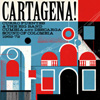 The late Curro Fuentes was quite a fascinating guy.  The youngest brother of the Fuentes musical dynasty that dominated Colombian music for four decades, he stayed behind on the coast and started his own studio when Discos Fuentes relocated to the city of Medellin (he found highland food to be "insipid"anyway).  Combining some of Colombia's biggest jazzmen with the most exciting young musicians culled from Cartegena's many red-light district casinos, brothels, and strip clubs, he produced a slew of scorching, sexed-up big band records in the '60s.  Cartagena! assembles many of them, but the high level of quality here makes me think that the vault is far from empty.  I sincerely hope there will be a sequel.
The late Curro Fuentes was quite a fascinating guy.  The youngest brother of the Fuentes musical dynasty that dominated Colombian music for four decades, he stayed behind on the coast and started his own studio when Discos Fuentes relocated to the city of Medellin (he found highland food to be "insipid"anyway).  Combining some of Colombia's biggest jazzmen with the most exciting young musicians culled from Cartegena's many red-light district casinos, brothels, and strip clubs, he produced a slew of scorching, sexed-up big band records in the '60s.  Cartagena! assembles many of them, but the high level of quality here makes me think that the vault is far from empty.  I sincerely hope there will be a sequel.
Cartagena! is a sequel of sorts to 2007's Columbia!, which covered the output of Discos Fuentes (the label run by Curro's brothers Antonio and Rafael) around roughly the same period.  Despite Discos Fuentes' huge success, Curro always chose to remain separate, starting off with with his own Discos Curros imprint before eventually teaming up with Phillips.  In a way, Curro's studio was kind of a Colombian analog to Factory Records, as it was very devoted to Cartagena's local music scene and there was a lot of overlap between bands–many musicians that led their own bands happily lended their talents to other ensembles.  Consequently, Curro's productions drew from a pretty unparalleled talent pool.  Equally important is the fact that Fuentes had very strong opinions about what sounded good and wasn't at all shy about sharing them, replacing percussionists and pianists himself if they couldn't get a track just right.  Also, he was one of the first cumbia producers to make heavy use of electric bass, which he liked quite loud.
The eclectic array of performers that Fuentes drew together resulted in some interesting cross-pollinations between Latin music genres, which goes a long way towards explaining why this music is so spectacular.  The young musicians from Cartagena's clubs made damn sure that the rhythms were raucous and propulsive, while their more established counterparts ensured that the arrangements were skillful and inventive.  Despite the disparate backgrounds and the high level of musicianship, everyone could agree upon the very populist objective of heating up dancefloors.  As such, this music was very focused on appealingly accessible elements like wild percussion, sultry grooves, and memorable hooks, which is quite different than where American jazz was headed around the same time.
Of all the artists, I was most impressed by saxophonist/bandleader Lucho Bermudez, who is the sole returnee from Colombia! (Soundway sure loves exclamation points).  Bermudez's two pieces are the most perfect synthesis of all of the great stuff happening on this album: fluid solos, driving (but not hyperactive) grooves, virtuosic percussion, infectious enthusiasm, quirkiness, character, and lots of vocal whoops and yelps (which are very important to me).  He is not the sole stand-out by any means, though, as I was similarly taken with the songs by several other bands–particularly that of Lucho's chief rival, Alex Acosta.
Primary compiler Roberto Guymant contributes some alternately informative and amusingly hyperbole-filled liner notes, the latter of which I found extremely charming ("The first time I heard this track, my brain immediately melted out my ears and dribbled down my shirt.").  Even though I don't quite agree that Crescensio Camacho's trumpets are apocalyptic or that Los Seven Del Swing embody what Black Sabbath would have sounded like if they'd been raised on the Colombia coast, his enthusiasm is pretty contagious.  Also, he clearly knows what he is talking about both musically and historically, which is not easy when there are so many regional scenes and similar-sounding genres (to my non-Colombian ears) combining and mutating.  To give an example, I learned that the upper classes were scandalized when jazz and cumbia were first combined in the 1940s because it made young Colombians "dance like blacks."  Fortunately, the young people had a lot more influence on where their culture was headed than the wealthy, reactionary types.  Of course, as much as I love colorful anecdotes and uncomfortable cultural factoids, the most important thing of all is quality of the music and Roberto and his co-curators simply have great taste.  A few pieces are certainly too frenzied or locked-groove-sounding for my taste, but they are largely outnumbered by excellent ones.  This is a thoroughly fun and vibrant album.
Samples:
- Lucho Bermudez Y Su Orquesta Sabanera, "Arroz Con Coco"
- Orlando Fortich Y Su Orquesta, "Yolanda"
- Alex Acosta Y Su Orquesta, "La Gozadera"
 
Read More
- Administrator
- Albums and Singles

Since the Afghan Whigs called it quits a decade ago, frontman Greg Dulli has been quietly releasing a stream of solid, occasionally fantastic albums with his current band, the Twilight Singers. Dulli's latest release is his first with the Singers since recording the Gutter Twins' debut with former Screaming Trees vocalist and frequent collaborator Mark Lanegan.
The moment I saw the cover art for Dynamite Steps, which echoes the grayscale, shadowy palette of 2003's Blackberry Belle (secretly Dulli's best album), my interest was piqued. Dulli has been making consistent music for 20 years, first with the Afghan Whigs' brand of cathartic 1990s alt-rock shot through with soul, now with the Twilight Singers' downtempo, back-alley blues. An enjoyable album from Dulli was a safe bet—I hoped for something more.
As can be expected, Dynamite Steps is not a reinvention or departure. It is Dulli-by-numbers, a master of his craft writing for his audience and sticking a little too close to his comfort zone. The highlights come early: propulsive, piano-driven opener "Last Night in Town" is one of the album's catchiest songs. Mark Lanegan contributes a somber vocal to "Be Invited," adding an effective dose of gravitas: it plays like a great, lost B-side from the Gutter Twins' slept-on Saturnalia. "Waves" is the album's most raucous moment, Dulli's strained vocals atop a bed of dissonant guitars and frantic drumming recalling "I'm Her Slave"-era Whigs. Dulli puts on a powerful live show, and songs like these are his bread and butter on stage—all palpable tension and release, rock and roll melodrama packed with sing-along choruses.
My favorite song, "On the Corner," shares its title with Miles Davis' 1972 jazz-funk masterstroke, likely not by coincidence—Dulli has referenced Davis before on the Whigs' "Miles Iz Ded" (and its remix "Rebirth of the Cool"), written immediately after his passing. "On the Corner" recalls its namesake's groove and pairs it with a couplet that stands out, halfway into an album overflowing with Dulli's trademark seedy lyrics: "All rise with me / all take your place." In between references to Gomorrah, desire, licked lips, spread legs, and dirty kisses, Dulli seems to hint at a desire for spiritual redemption. This theme, touched on at various points, is eventually put to rest on the album's closing track, "Dynamite Steps," which finds Dulli drawn back to earthly desires: "Some speak of a light / control of the game / but I leave the past alone... Push your faith aside... Your medicine is faith / and your flesh divine."
Ultimately, Dulli's work lives or dies by the strength of his songwriting, which is why Dynamite Steps doesn't rank with his best efforts. Consistency is an issue by the album's second half: the songs are mid-tempo, languid and not terribly engaging. Dulli sounds passionate at times, but I find my attention lost because the songs are monochromatic in pace and construction. A potential highlight turned sour, Ani DiFranco's vocal on "Blackbird and the Fox" is pleasant but unmemorable, and it's not for her lack of trying—"Blackbird" falters because it aches for, quite frankly, a hook of any sort. With key exceptions (see the Afghan Whigs' unbelievable "Faded"), slow-burning ballads are not Dulli's strength, so it's disappointing to hear Dynamite Steps resort to them after playing its best cards early.
Despite its flaws, Dynamite Steps is worth a listen with the caveat that, while strong in parts, it is not Greg Dulli's most consistent record with the Twilight Singers. I look forward to hearing its better songs fleshed out on stage as the Singers tour this year, but I may not revisit the album too frequently in the meantime.
Samples:
Read More
- Administrator
- Albums and Singles
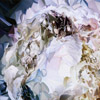 With each project providing a side of the album (or half of a CD), the whole is a series of dark compositions that are as complex as they are intimidating. The best part, however, is how these nuanced pieces sound like no one else.
With each project providing a side of the album (or half of a CD), the whole is a series of dark compositions that are as complex as they are intimidating. The best part, however, is how these nuanced pieces sound like no one else.
Mamiffer’s "Uncrossing" differs from their contribution on the split LP with Oakeater, focusing more on subtle textures and sparse, plaintive piano.The quiet background slowly becomes deeper and more cavernous, reverberating everything around it before dropping to silence, disrupted by a deep, echoing gunshot-like drum beat.
Soon the track builds again, bringing in a massive organ drone and a huge wall of scraping and grinding sounds over the disquieting rhythm.While the track on the Oakeater split reminded me of Skullflower, here it feels more like a denser, metal tinged take on Organum.While there’s more layers of sound here than David Jackman would usually include, the careful use of tone definitely resembles his work, in the best possible way.
Aaron Turner's House of Low Culture contributes "Ice Mole," with help from Z'EV on percussion.Opening with quiet static-y sounds and distant, menacing hums, Turner’s guitar becomes a prominent feature immediately, but changes its character throughout.Initially it drones along with his vocals, which are layered and off in the distance.
The piece builds into heavier, denser sounds that are stripped away to leave only quiet piano interludes before bringing back the static and guitar, with some more obvious metal percussion to be heard.The guitar builds to an overdriven, grinding fuzz before closing the song on more traditional guitar playing, letting delicate notes chime out in the open.
One of the best things about his album is the fact that neither side can fit into any real sort of pigeon hole.There's some drone, some metal, some industrial, and some noise kicking around on here that come together perfectly.Genre labels don’t really apply, nor should they.This split has the right amount of dark tension, but avoids any possible cliché associated with it, and instead both artists excel at creating moody, yet diverse and complex works that are simply compelling.
samples:
- Mamiffer - "Uncrossing"
- House of Low Culture - "Ice Mole" (Excerpt 1)
- House of Low Culture - "Ice Mole" (Excerpt 2)
 
Read More
- Administrator
- Albums and Singles
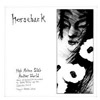
Pairing one of Matthew Bower's newer projects with Jenks Miller’s minimalist metal band is a wise move for Turgid Animal, and this 10" delivers the expected amount of guitar-focused chaos from both artists.
Voltigeurs' side-long track "Dew Blest Adawning" seems to have more in common with Total than Skullflower, instantly launching into full bore noise and not relenting until the needle hits dead wax.Throughout the echoed din, it sounds like there's actual guitar and synth sounds there somewhere, but destroyed beyond all recognition.It's almost like there's a melody to be heard, but it's so fully immersed in distortion that it's only a fleeting glimpse.
Horseback does two tracks, and both are rather different but nicely show the old school drone by way of riff heavy metal sound Miller has been cultivating."High Ashen Slab" opens with rapid, live drums and a repetitive organ melody that are (of course) propelled by overdriven guitar riffs.The guttural metal vocals which I'm normally not fond of work well, placed in the mix more like another instrument than traditional singing.Carefully the guitars take over, becoming noisier and more prominent before ending in a hollow land of guitar noise and screamed vocals.
"Another World" goes to more traditional drone metal territory, mixing a processed melodic loop and a thin, pounding beat.It’s much more about texture, with less focus on big, heavy riffs or subtle melodies.Eventually the latter pops up towards the end, shining through the gray roar triumphantly.
Between the two, I’ve got to give the edge to Horseback, who has been consistently impressing me since hearing The Invisible Mountain (before it was on Relapse).With the almost '70s hard rock tinged "High Ashen Slab" and the disciplined textural noise of "Another World," Miller's strengths are clear.The Voltigeurs side is more than competent, but has less of an original sound in comparison, not separating itself drastically from other guitar noise bands.
samples:
 
Read More
- Administrator
- Albums and Singles
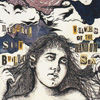 More than a decade into their career, the evolution of Natural Snow Buildings continues to surprise me: Waves of the Random Sea might be the most accessible album that Mehdi and Solange have released to date (in a good way, fortunately).  It might also be their masterpiece.  In any case, they've clearly made a lot of progress in broadening their palette of moods, as there is not much here that could be categorized as crushing, menacing, seething with dread, or oppressively sad.  Instead, this album occupies somewhat lighter, more spacious territory and is mostly filled with drone-tinged, temporally ambiguous acoustic folk instrumentals (albeit of the most lysergic and warped variety).  More importantly, it is absolutely amazing.  This is one of the most vibrant and multilayered albums that I have ever heard.
More than a decade into their career, the evolution of Natural Snow Buildings continues to surprise me: Waves of the Random Sea might be the most accessible album that Mehdi and Solange have released to date (in a good way, fortunately).  It might also be their masterpiece.  In any case, they've clearly made a lot of progress in broadening their palette of moods, as there is not much here that could be categorized as crushing, menacing, seething with dread, or oppressively sad.  Instead, this album occupies somewhat lighter, more spacious territory and is mostly filled with drone-tinged, temporally ambiguous acoustic folk instrumentals (albeit of the most lysergic and warped variety).  More importantly, it is absolutely amazing.  This is one of the most vibrant and multilayered albums that I have ever heard.
This is a very coherent and thoughtfully sequenced (double) album, something that Mehdi and Solange have become increasingly adept at in recent years.Waves of the Random Sea works quite nicely as a whole and it works equally well as two separate halves.  That separation of the two albums is even preserved on the CD version, as the third piece, "Breaches Through the Layers of Fog," concludes with roughly a minute of silence.  Interestingly, however, the two halves bisect quite differently on the CD and LP versions, with the brilliant first half of the album ending with either the post-coital-sounding warmth of "Breaches" (CD) or the disquieting, theremin-happy, sci-fi weirdness of "Abduction Dream."  There are some other differences between the two versions of the album as well, ranging from subtle editing and track length changes to an excellent LP-only drone piece entitled "Split Realm," which seems far more like an album highlight than a bonus track.
As alluded to earlier, the first half of this album approaches perfection. It may very well be the most consistently mesmerizing and beautiful forty-minute stretch in the entire Natural Snow Buildings discography.  "Waves of the Random Sea" begins the album with flanging drones and quivering swells before turning into a hypnotically repeating and surprisingly melodic acoustic guitar and tambourine interlude.  Those two motifs set the tone for the album's entire first half, which can best be summarized by saying that I feel like I am covertly witnessing a pagan/medieval/morbid fairy tale/ritualistic acoustic ensemble performing in a clearing in the woods while the very fabric of reality shudders and occasionally ruptures around them and a murder of nearby crows caws ominously.
Even that doesn't quite do it justice, however, as it fails to mention that Mehdi and Solange manage to sound like a full drum circle and a half dozen musicians wielding an eclectic array of tamburas and other stringed instruments playing together at once. Nor does it take into account that the production and layering throughout is quite stunning, as sounds seamless drift in and out of the mix and pan and shimmer hypnotically.  Or that the woozily twinkling coda of "Breaches Through the Layers of Fog" feels like waking up after a long beautiful dream.  There are also a number of great details that I could zero in on as well (like the increasingly prominent scrapes of a finger sliding from fret to fret in "Breaches"), but the important thing is that the first three songs constitute pure drone/psych heaven.
The second half, on the other hand, is merely great (although the added "Split Realm" evens the score a bit on the vinyl version).  The centerpiece here is the twenty-minute epic "Drift the Water Soul," which morphs into a prolonged bed of glistening, shuddering drone after an introduction that sounds like ceremony music for some sort of royal medieval procession.  One thing about the drone section that amazes is me is how alive and organic it feels–all the various components shiver, drift, and swell with such seamlessness that it is hard to remember that there are two actual people with instruments and a mixer weaving it all together.  Each sound seems intimately connected with every other sound and they all seem to react to subtle shifts around them.
"The Still Desert" concludes the album in much the same fashion, though it is nicely enhanced this time around by a complicated tapestry of cymbals, acoustic guitars, and pipes as well as a heartbreakingly strangled-sounding trumpet.  Again, an important CD/LP difference makes an appearance here, as the vinyl version slowly fades and shivers to a close, while the CD ends with brief and perversely sweet vocal piece by Mehdi in which he repeatedly assures me that my home is where I’m happy.  It's an unexpected way to end the album, but a very effective one: by the end of Waves of the Random Sea, I feel like I have just returned to reality after a very long and weird journey.  I've not sure that I'm necessarily happy that I am back, but it is nice to have some time to process what I just experienced.
Assessing the superiority of the vinyl vs. the CD version is thankfully made quite easy by the fact that Solange's cover art is characteristically striking and better appreciated in larger form.  However, both albums are absolutely stellar–they're just a bit different.  Oddly, it took me a few listens to fully warm to this release, as I was initially startled by how comparatively "pastoral" it is at times.  It also seemed quite puzzling that Mehdi hardly sings at all and that there are no majestically dense drone passages.  However, the more I listen to the album, the more I find myself utterly baffled by my initial reaction.  The depth, complexity, focus, imagination, and ambition of this album are all pretty spectacular, even by Natural Snow Buildings standards.  Waves of the Random Sea is essential.  I love this.
 
Samples:
Read More
- Administrator
- Albums and Singles
 Over the past few albums, Jean Hervé-Peron and Zappi Diermaier’s version of Faust have been getting more and more into the rock side of their krautrock. On this latest release, they have fully embraced rock and roll to the point where rock has become pulverised and the roll is in free-fall. Hints of classic rock (as in 1950s rock, not ‘70s dad rock) are smashed into atoms and reconstituted as something new, something loud and Something Dirty.
Over the past few albums, Jean Hervé-Peron and Zappi Diermaier’s version of Faust have been getting more and more into the rock side of their krautrock. On this latest release, they have fully embraced rock and roll to the point where rock has become pulverised and the roll is in free-fall. Hints of classic rock (as in 1950s rock, not ‘70s dad rock) are smashed into atoms and reconstituted as something new, something loud and Something Dirty.
With a title like "Tell the Bitch to Go Home," I was expecting something with a bit of clout from the opening piece and I was not disappointed. Feedback, surging organs and tight, powerful drumming come together to make a wild, happy explosion; there is a tingle along the back of my neck like the first time I heard Faust (Faust IV being the culprit in question) and I have fallen in love all over again with them. Not that I have ever stopped loving them, mind you. This excitement does not fade after the initial hit, it builds across Something Dirty as the band fully invades my mind. Many of the songs feel like loose jams rather than finished pieces; this is not a negative criticism at all as the end result is a collection of music alive with vibrancy and danger.
Of course, it would not be a Faust album without a few surprises or about turns. "Lost the Signal" is a slinky, sexy piece of work that sounds nothing like Faust and everything like Faust. Here, Geraldine Swayne takes over the vocal duties and feminises Faust’s music beautifully. Initially, the album’s title could be taken to refer to the noisiness of the music but Swayne’s singing and the euphoric moment where she shouts for the band to "Start it up!" points to something more carnal. Faust have never been strangers to the sweatier, saltier side of life but Something Dirty definitely has more swagger to it than any of their other releases. James Johnston may have left the Bad Seeds but Nick Cave obviously has left his mark on his guitar playing.
While I have yet to encounter a Faust album I have not liked, Something Dirty strikes me as being that bit more special than the last few releases by either version of Faust. I do not know whether it is because this is more accessible than usual or because the group have really found their groove but I do know that this is one of the strongest albums in their catalogue, a blood relative of other "pop hits" like the aforementioned Faust IV or even So Far. Something Dirty is a fling I want to have again and again.
samples:
 
Read More
- Administrator
- Albums and Singles
 Ghostly International presents SMM: Context as a vaguely philosophical release centered around the qualities that film soundtracks, classical music, and ambient music share, but I think its lack of pretense is part of what makes it great. On one level, SMM: Context is just a collection of eleven songs from eleven electronic artists, including Leyland James Kirby, Jacaszek, Aidan Baker, and Kyle Bobby Dunn. On another level, it's a very coherent and fluid record filled with beautiful songs and sustained by a shared vision.
Ghostly International presents SMM: Context as a vaguely philosophical release centered around the qualities that film soundtracks, classical music, and ambient music share, but I think its lack of pretense is part of what makes it great. On one level, SMM: Context is just a collection of eleven songs from eleven electronic artists, including Leyland James Kirby, Jacaszek, Aidan Baker, and Kyle Bobby Dunn. On another level, it's a very coherent and fluid record filled with beautiful songs and sustained by a shared vision.
Superficially, much of the music on SMM: Context is alike. None of the songs raise their voice beyond a roar, and nearly all of the artists use long, unhurried phrases to build their pieces. Most of the artists, like Leyland Kirby, Christina Vantzou, Goldmund—Keith Kenniff of Helios—Rafael Anton Irissarri, and Jacaszek also use or sample acoustic instruments, especially strings and voices, to mock up a Stars of the Lid or Angelo Badalamenti vibe, which is a decent way to describe most of the record. Beyond those qualities, however, SMM: Context is filled with a panoply of sounds, none of which can be reduced to a single reference or influence.
Kirby's atmospheric contribution, "Polaroid," is a good example of this, in part because it epitomizes the electronic-acoustic—not electro-acoustic—synthesis that holds the record together thematically. His nylon string study is suffused with electronic steam and synthetic drones, but they are a far cry from the sounds he once produced as V/Vm, The Caretaker, and Leyland James Kirby. In fact, his typically dominant drones play a supporting role here, as Leyland puts the emphasis sharply on an acoustic guitar, with which he produces a simple and sharply played melody. Badalamenti's sonic disposition is present, mostly in the form of atmospheric keyboards, but Kirby's guitar recalls the music of Andrés Segovia just as strongly. It is romantic stuff, and it typifies a strategy each artist on SMM: Context shares, with just a few exceptions.
Christina Vantzou, from The Dead Texan, and Rafael Anton Irisarri also employ direct, gently played melodies over a bed of synthetic tones, but neither of them emphasize atmosphere in the same way. Nevertheless, they both use muted colors and simmering textures to produce romantic and cinematic sounds, just like Kirby. Jacaszek makes the best use of this approach, though; his "Elegia" is the most resplendent and decorated song on SMM: Context, and maybe the most beautiful thanks to the way he contrasts his melodies and noises. If Kirby, Vantzou, and Irisarri represent the cinematic tendencies of SMM artists, then Jacaszek represents the classical and symphonic ones.
Kyle Bobby Dunn is his austere counterpart. "Runge's Last Stand" features nothing in the way of conventional melodies or rhythms, and it is less reliant on diverse colors and acoustic instruments than the other songs on the album are. Using but a few diaphanous tones and textures, he manages to evoke the same kind of introverted and fleeting beauty that Jacaszek achieves. Both Aidan Baker and Manual follow the same path, but neither of them can contend with Kyle's liminal spaces and rarefied phrases. He chases Morton Feldman's sound and gets part of the way there; next to that Baker and Manual can't help but sound a little heavy-handed.
Even though SMM: Context proceeds in a seamless way, SMM as a genre doesn't make much sense to me. If Ghostly International wants to facilitate the breaking down of musical boundaries, it can do so without putting yet another folder in the genre filing cabinet; SMM is an acronym they made up in the first place, and it doesn't even stand for anything. Why force all of these artists into a fabricated musical bubble when I can't even put my finger on one quality that they all uniformly share?
Ghostly International might have just gotten lucky with SMM: Context; it has eleven very good songs made by eleven very talented people, and all of them share enough of the same spirit to fit comfortably on the same record. In this case, so much of the music is just so beautiful and direct that I don't care if it's called classical, symphonic, minimal, or something even more abstract and unhelpful, like SMM.
samples:
- Leyland Kirby, "Polaroid"
- The Fun Years, "Cornelia Amygdaloid"
- Kyle Bobby Dunn, "Runge's Last Stand"
 
Read More
- Administrator
- Albums and Singles
 For their third LP for Sublime Frequencies, the group has put together a stunning collection of trance-inducing works. Yet, there are two things that set Beatte Harab apart from Group Doueh’s previous albums. The recording quality is a step above the others: granted the overall quality is not high fidelity but gone is the murk so all the instruments and singers can be heard distinctly. Secondly, Doueh himself has moved more into the background. His deft touch of the fretboard is undiminished but he confines himself to the back of the mix, his playing developing the overall shape of the music without dominating the other performers.
For their third LP for Sublime Frequencies, the group has put together a stunning collection of trance-inducing works. Yet, there are two things that set Beatte Harab apart from Group Doueh’s previous albums. The recording quality is a step above the others: granted the overall quality is not high fidelity but gone is the murk so all the instruments and singers can be heard distinctly. Secondly, Doueh himself has moved more into the background. His deft touch of the fretboard is undiminished but he confines himself to the back of the mix, his playing developing the overall shape of the music without dominating the other performers.
The album is mainly given over to the vocals which sound superb compared to some of the distorted recordings on the earlier LPs. Halima Jakani’s voice still manages to send my speakers into contortions; her singing sounding more impassioned on the title track (a version of which also appeared on the group’s previous album). Throughout Beatte Harab Jakani stands out compared to the other elements of the music; her voice silhouetted by the rest of Group Doueh.
That is not to say that the other musicians are relegated to a mere backing band. On "Kar Lakhaal," Doueh leads them through a fantastic instrumental piece that starts off contemplative and controlled but soon sprouts wings to fly into directions unknown. Leaving down his electric guitar for the tinidet (a banjo-like instrument), the music on Beatte Harab has a very different character to what I have heard previously from Doueh and his players. When not using electric guitar and easing up on the synthesisers that punctuated their other releases, it highlights how little Group Doueh deviates from traditional forms. While this is still a terrific album, for the most part I would be unable to guess it was Group Doueh without the album sleeve in front of me.
However, the classic Doueh sound turns up from time to time; Doueh’s fretwork on "Lehi Teyilu" being a particularly stunning example of his skill. Listening to such exquisite musicianship throughout Beatte Harab, I repeatedly imagine how this music must sound live. It is not a huge stretch considering all of the Group Doueh recordings seem to be one take. I know they are about to embark on a tour of the UK but opening up the gatefold sleeve and seeing a gorgeous photo (perhaps a video still?) of the audience during a Group Doueh performance in what I must assume is the Western Sahara, I cannot help but wish to be dropped smack bang in the middle of it all. It is a bit like listening to old bootlegs of The Velvet Underground or Throbbing Gristle, strange as it may seem. This is music very much born out of a landscape and a culture that cannot be fully appreciated when transplanted out of its environment. Yet equally I wonder if the mystery also adds to the experience, whether the evocative photos that line the sleeves create a world in my mind that is not really out there.
In any case, being able to hear this music at all is something to be thankful for as Group Doueh continues to inspire awe and delight. Hopefully, Sublime Frequencies do not tarry when it comes to putting out the CD of this (for the time being) vinyl only release. As lovely as the LPs are, Group Doueh deserve a bigger audience than the limited edition vinyl crowd.
 
Read More
- Administrator
- Albums and Singles
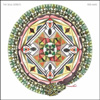 The latest opus from these prolific and chameleonic Swedes finds them in full-on primal rock mode, unearthing another batch of jagged, bludgeoning, and repetition-obsessed songs and reminding me that rock music can still be a bit dangerous and scary. There's a big twist this time around, however, as the Defekts have added a very noteworthy fifth member: the rather singular Daniel Higgs, formerly of Dischord art-punk stalwarts Lungfish. The addition proves to be an inspired move, as Higgs' intense, somewhat unsettling persona serves to highlight the darker, weirder side of the band.
The latest opus from these prolific and chameleonic Swedes finds them in full-on primal rock mode, unearthing another batch of jagged, bludgeoning, and repetition-obsessed songs and reminding me that rock music can still be a bit dangerous and scary. There's a big twist this time around, however, as the Defekts have added a very noteworthy fifth member: the rather singular Daniel Higgs, formerly of Dischord art-punk stalwarts Lungfish. The addition proves to be an inspired move, as Higgs' intense, somewhat unsettling persona serves to highlight the darker, weirder side of the band.
The Skull Defekts are a pretty unusual band for a whole host of reasons, but the aspect that I find most striking about them is how raw and primitive they can sound. It's an impressive feat, given that the four original members have been central figures in Sweden's experimental music community for years and that they have clearly absorbed a lot of very cerebral and exotic influences. Sometimes those highbrow influences manifest themselves fairly bluntly, such as on 2008's The Drone Drug, but the Defekts are smart and assured enough to ignore everything they've learned (or at least expertly conceal it) when it suits them.  On Peer Amid, the heavy emphasis on repetition could be distantly rooted in a fascination with raga, minimalist classical, or Neu!, but those touches are often totally subsumed by the band's unwavering focus on pounding, gut-level power.  Sure, they may regularly and fruitfully collaborate with folks like Pan Sonic, but it sounds like their true kindred spirits are more likely The Stooges or The Birthday Party. Having a frontman as imposing and shamanic as Higgs can only heighten that resemblance.
Given that these songs were mostly written very quickly from improvisations based upon one or two riffs each, their success or failure is largely based around how much I like the main riff. The strongest and most instantly gratifying of the batch is probably "No More Always," which boasts a very gritty and libidinal garage rock groove and some wonderful sneering vocals from Higgs. The propulsively throbbing title piece is also pretty electrifying, largely due to the stellar drumming of Henrik Rylander. In fact, Rylander proves to be the band's greatest asset over the course of the album, enlivening their weaker moments through sheer muscle and exuberance and maintaining a solid foundation for the oft-chaotic guitars and electronics.
I was also extremely impressed with the degree of guitar abuse throughout Peer Amid, as Joachim Nordwall and Daniel Fagerstroem sound like they're almost always on the verge of snapping strings or going out of tune. For his part, Higgs does not disappoint either, delivering his vocals with a sometimes frightening conviction. However, on the occasions when there isn't a solid beat holding all the component parts together, The Skull Defekts can seem pretty self-indulgent and inaccessible, as they do on the meandering "Gospel of the Skull."
The presence of Higgs is certain to polarize opinions on this album, as he is a vocalist that is impossible to ignore. I'm a bit conflicted myself, as I find pre-Higgs Defekts albums a bit more listenable, but Peer Amid hits higher highs. Regardless, he definitely adds a lot of character, presence, and tension to The Skull Defekts sound. Also, heavy rock provides a great foil for Daniel's outsized personality, so the pairing is a pretty mutually advantageous one all around. Unfortunately, there are some accompanying downsides too, as he draws the attention away from the rest of the band and I find his wild-eyed intensity pretty hard to take in large doses (a prime example is the endless whooping and yelping in "What Knives, What Birds"). Also, some of his lyrics and spoken-word interludes are way too stream-of-consciousness or bafflingly obtuse for my taste– I have absolutely no idea what he was trying to do with "Join the True," but I am certain that he was resoundingly unsuccessful at whatever it was. Picking stuff like that apart, however, is missing the point a bit: the content is secondary to Higgs' sheer force of personality.
Despite its occasional flaws and missteps, Peer Amid's best moments offer some of the most visceral and exciting rock music available.
Samples:
 
 
 
Read More
 The latest opus from these prolific and chameleonic Swedes finds them in full-on primal rock mode, unearthing another batch of jagged, bludgeoning, and repetition-obsessed songs and reminding me that rock music can still be a bit dangerous and scary. There's a big twist this time around, however, as the Defekts have added a very noteworthy fifth member: the rather singular Daniel Higgs, formerly of Dischord art-punk stalwarts Lungfish. The addition proves to be an inspired move, as Higgs' intense, somewhat unsettling persona serves to highlight the darker, weirder side of the band.
The latest opus from these prolific and chameleonic Swedes finds them in full-on primal rock mode, unearthing another batch of jagged, bludgeoning, and repetition-obsessed songs and reminding me that rock music can still be a bit dangerous and scary. There's a big twist this time around, however, as the Defekts have added a very noteworthy fifth member: the rather singular Daniel Higgs, formerly of Dischord art-punk stalwarts Lungfish. The addition proves to be an inspired move, as Higgs' intense, somewhat unsettling persona serves to highlight the darker, weirder side of the band.
- Administrator
- Albums and Singles
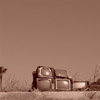 A sensitive and spacious work, To R.S. utilizes a variety of traditional instruments (guitars, pianos, natural sounds, etc) in a completely different context, dissolving the known sounds into sparse, pure tones and subtle variations. As a work dedicated to composer Robert Schumann, it’s quite an accomplished slice of minimalism in its own right.
A sensitive and spacious work, To R.S. utilizes a variety of traditional instruments (guitars, pianos, natural sounds, etc) in a completely different context, dissolving the known sounds into sparse, pure tones and subtle variations. As a work dedicated to composer Robert Schumann, it’s quite an accomplished slice of minimalism in its own right.
Functioning as one piece divided into four logical sections, the movements flow nicely into one another, but each are distinct and stand on their own.The opening "Theme and Variations" reminded me, at least in passing, of Eleh's clinical attention to detail when it comes to employing tones and their variations.However, Wanke's tones, while carefully controlled, almost seem to bring along with them a perceptible group of imperfections:recording errors, natural interruptions, or intentionally placed there.Personally, I found them to be fascinating, and a good accompaniment to the otherwise icy, static tones.
"Turtle" turns those tones up louder and heavier, pushing into the lower frequencies but also bringing along quiet waves of sound that crash over, demanding more attention but not overshadowing the subtle undercurrent of sounds and textures.Even when the heavier sounds start to bleed into the red, they never overshadow the subtlety of sound.
These are mostly stripped away on "Joke," in lieu of heavy reverberated strings that cut harshly through, allowing silence in.Distant environmental sounds and improvised percussive elements creep in, slowly filling up the latter half and rendering it into a study in textures, as opposed to tones.The appropriately titled "Finale" even introduces conventional piano passages, extracted from Schumann's own work.The piano is overtaken by textural crackling that eventually becomes the focus, and when joined with deep, heavy melodies, takes on a post-industrial vibe.
The melody eventually becomes the focus and becomes warmer, even with an overt digital loop that goes along with it.Throughout there is a significant amount of variance in the sound before coming to a close on the same sparse, basic tones that opened the disc, allowing everything to come full circle.
Given the distinctive sound and conceptual structure of the pieces, it's hard to believe this is only Wanke's second full length release.Carefully balancing complexity and simplicity, his juggling of treated and pure sounds into true, traditional minimalism is exceptionally well done.
samples:
 
Read More


